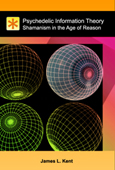
References
Distributed Cognition
WikiPedia.org; Internet Reference, 2010.
Distributed cognition is a psychological theory developed in the mid 1980s by Edwin Hutchins. Using insights from sociology, cognitive science, and the psychology of Vygotsky (cf activity theory) it emphasizes the social aspects of cognition. It is a framework (not a method) that involves the co-ordination between individuals, artifacts and the environment. It has several key components:
1. Embodiment of information that is embedded in representations of interaction
2. Coordination of enaction among embodied agents
3. Ecological contributions to a cognitive ecosystem
In a sense, it expresses cognition as the process of information that occurs from interaction with symbols in the world. It considers and labels all phenomena responsible for this processing as ecological elements of a cognitive ecosystem. The ecosystem is the environment in which ecological elements assemble and interact in respect to a specific cognitive process. Cognition is then shaped by the transduction of information across extended and embodied modalities, the representations formed as result of their interactions and the attentive distribution of those representations toward a cognitive goal.
Distributed cognition is a branch of cognitive science that proposes that human knowledge and cognition are not confined to the individual. Instead, it is distributed by placing memories, facts, or knowledge on the objects, individuals, and tools in our environment. Distributed cognition is a useful approach for (re)designing social aspects of cognition by putting emphasis on the individual and his/her environment. Distributed cognition views a system as a set of representations, and models the interchange of information between these representations. These representations can be either in the mental space of the participants or external representations available in the environment.
This abstraction can be categorized into three distinct types of processes.
1. Cognitive processes may be distributed across the members of a social group.
2. Cognitive processes may be distributed in the sense that the operation of the cognitive system involves coordination between internal and external (material or environmental) structure.
3. Processes may be distributed through time in such a way that the products of earlier events can transform the nature of related events.
Web Resource: en.wikipedia.org
